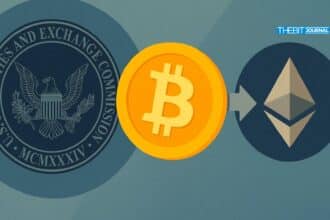Major U.S. banks are moving closer to launching a stablecoin venture amid rising digital currency adoption and clearer regulations. JPMorgan Chase, Bank of America, Citigroup, and Wells Fargo are exploring a shared initiative to issue a unified digital dollar. This stablecoin venture may reshape payment systems and challenge crypto startups and tech companies in digital finance.
JPMorgan Leads Banks in Stablecoin Talks
JPMorgan, Bank of America, Citigroup, and Wells Fargo have started discussions on forming a stablecoin consortium. While still at a conceptual stage, the initiative is developing traction thanks to favorable regulatory developments. Traditional banks’ coordinated push into the digital asset market is a move.

Joining the discussions were the operator behind Zelle — Early Warning Services — and the Clearing House. They already provide critical infrastructure to pretty much any significant U.S financial institutions. Their involvement could streamline the development and launch of a bank-backed stablecoin.
Banks aim to issue a stablecoin backed by liquid reserves that are pegged to the U.S. dollar. They intend to comply with new legislation and comply with the Bank Secrecy Act. The proposed model may also allow external banks to use the stablecoin, broadening its reach and utility.
GENIUS Act Pushes Banks Toward Stablecoins
The Senate’s recent progress on the bipartisan GENIUS Act has accelerated bank interest in launching a stablecoin venture. This legislation outlines clear oversight rules for both bank and nonbank stablecoin issuers. It includes reserve requirements and mandates compliance with transparency standards.

Lawmakers aim to safeguard consumer trust while keeping the U.S. dollar dominant in global finance. Banks now see a regulatory framework as essential to legitimizing stablecoins for mainstream use. This development has reduced institutional hesitance following increased scrutiny in 2022.
Regulators intend to prevent misuse while encouraging innovation under strict guidelines. This creates a favorable environment for banks looking to modernize payment systems. Consequently, bank executives are revisiting stablecoin plans previously shelved due to compliance concerns.
Market Timing and Competition Drive Strategic Interest
The timing of the stablecoin venture aligns with broader political support for digital finance under the current administration. Recent moves by firms associated with the Trump family to launch stablecoins have also increased pressure. Traditional banks now see a need to act swiftly to retain control over payment infrastructure.
A consortium-backed stablecoin could significantly improve cross-border transactions and settlement times. Banks view this digital currency as a way to compete with private sector innovations. They believe it could also improve operational efficiency and reduce reliance on third-party platforms.
Regional banks are also exploring separate digital currency efforts. However, such smaller ventures may struggle with scale and compliance costs. The consortium’s larger footprint and infrastructure give it a distinct advantage in the evolving market.
FAQs
What is the purpose of major banks’ stablecoin ventures?
The goal is to issue a shared digital currency backed by reserves, streamlining payments and controlling digital infrastructure.
Who is involved in the stablecoin discussions?
JPMorgan Chase, Bank of America, Citigroup, Wells Fargo, Early Warning Services, and the Clearing House are participating.
Why now?
Recent legislative developments and political support have reduced regulatory uncertainty, encouraging banks to explore stablecoin solutions again.
Will other banks have access to the stablecoin?
Yes, the proposed model may allow participation from banks outside the core consortium to increase adoption and utility.
What challenges could the stablecoin venture face?
Challenges include meeting new regulatory requirements, ensuring cybersecurity, and competing with private digital currencies already in use.
Glossary of Key Terms
Stablecoin: A digital currency pegged to a stable asset like the U.S. dollar, used to minimize price volatility.
Consortium: A group of organizations working toward a common goal or initiative.
GENIUS Act: A proposed U.S. law establishing rules and oversight for stablecoin issuers.
Bank Secrecy Act: A U.S. law requiring financial institutions to assist in detecting and preventing money laundering.
Digital Currency: An Electronic form of money that exists only in digital format and is used for transactions over the internet.





























